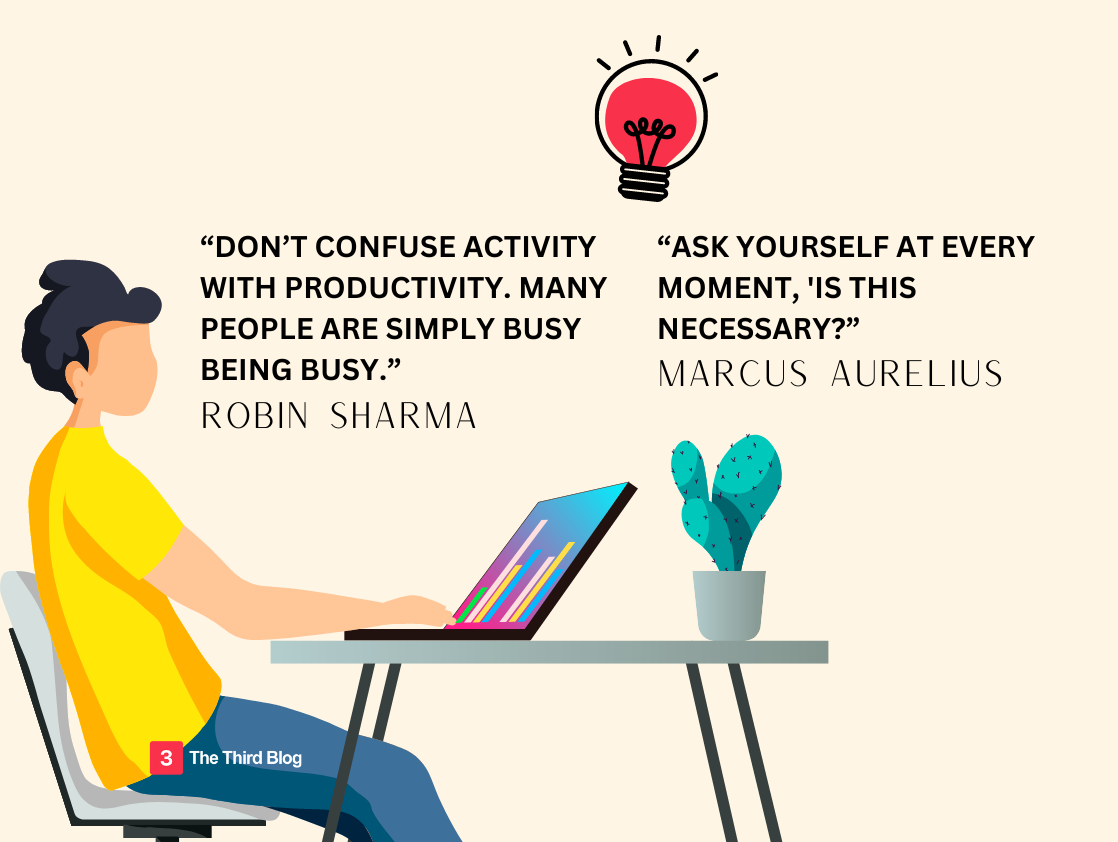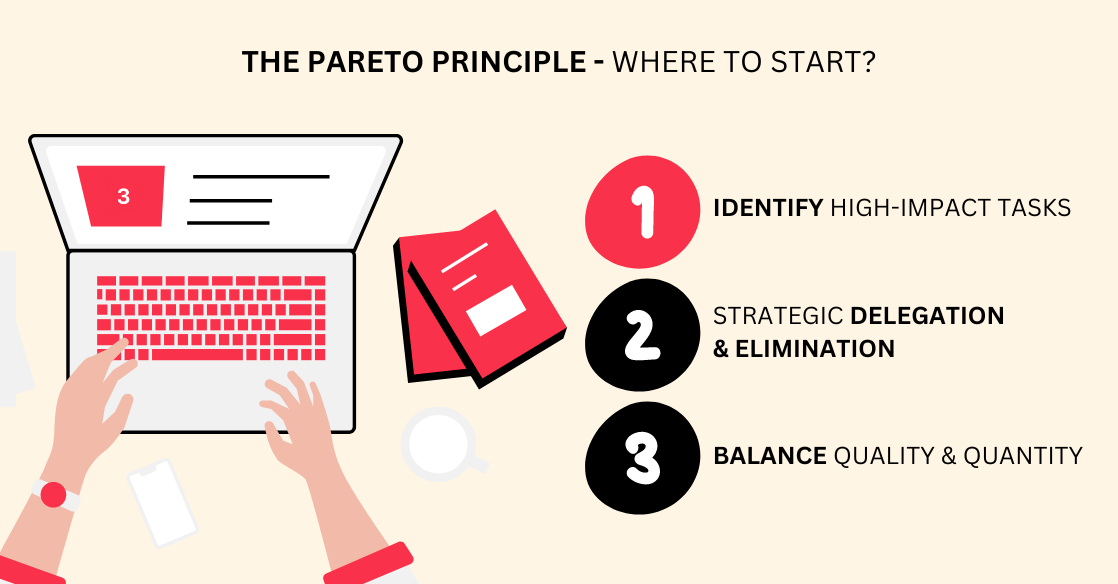Productivity Simplexity, grounded in the 80/20 rule, revolutionises how we approach tasks by emphasising the importance of focusing on the vital few rather than the trivial many. It's easy to look busy without getting anything useful done. This is what we want to avoid.
The Simplexity Approach
The 80/20 rule, also known as the Pareto Principle, posits that 80% of outcomes often stem from 20% of efforts. Understanding and applying this rule can revolutionise how we prioritise and tackle tasks, leading to greater productivity and satisfaction.
The essence of Productivity Simplexity is finding the balance between the quality of work and the quantity of tasks. It’s about working smarter, not harder, and ensuring that your efforts align closely with your most important objectives.

“Don’t confuse activity with productivity. Many people are simply busy being busy.” – Robin Sharma
Avoiding Common Pitfalls
It's easy to fall into the trap of equating busyness with productivity. However, being busy doesn't necessarily mean being productive. Avoid this pitfall by continually reassessing your priorities and ensuring your efforts align with your most important goals.
“Ask yourself at every moment, 'Is this necessary?” ― Marcus Aurelius

Where to start?
Identify High-Impact Tasks: The key is to identify which tasks fall into the impactful 20%. This requires evaluating your to-do list to distinguish between tasks that significantly contribute to your goals and those that offer less value.
If you're optimising your work schedule, look directly at your KPIs for the year - then pick tasks and projects that directly align with it. Be super critical here. Are you working on something that offers genuine value or is it just a task to look busy.
If you're a manager, break them down further and ensure your team have their own goals that contribute to the wider vision. Stop working for work sake and ensure there is strategy in everything you do.
Strategic Delegation and Elimination: Once high-impact tasks are identified, the next step is to delegate or eliminate lower-impact tasks. This simplification enables you to dedicate more time and energy to the tasks that truly matter.
This is where a lot of people struggle. You have to be ruthless when protecting your time otherwise people will fill it with crap. With new time and focus you can then work on quality over quantity.
Balancing Quality and Quantity: In essence, Productivity Simplexity using the 80/20 rule is about a smarter work ethic. It's a strategy that involves doing less but with much more impact.

Optimise with single-tasking:
Contrary to the popular notion of multitasking, single tasking is increasingly recognized as the most effective and efficient way to work. There are a bunch of interesting articles here, here and here - but I've outlined the most important benefits below.
“If there are nine rabbits on the ground, if you want to catch one, just focus on one.” – Jack Ma
Enhanced Focus and Efficiency: Single tasking allows for deeper concentration, minimizing distractions and the mental load that comes with switching between tasks. When you focus on one task, your brain is able to process information more efficiently, leading to higher quality work in less time.
Reduction in Errors: Multitasking often leads to more mistakes due to divided attention. Single tasking, on the other hand, allows for a more thorough and detailed approach to each task, significantly reducing the likelihood of errors.
Stress Reduction: Juggling multiple tasks simultaneously can be overwhelming and stressful. Single tasking simplifies your workload, making it more manageable and reducing anxiety. This clarity and calmness can lead to a more enjoyable and fulfilling work experience.
Improved Memory and Learning: When you single-task, your brain is better able to absorb and retain information. This focused approach aids in learning new skills and retaining detailed information, which is often compromised when multitasking.
Higher Quality of Work: Single tasking often results in higher quality outcomes. With undivided attention, tasks are completed with a greater level of care and precision, leading to better results.
Long-term Productivity: While multitasking might give the illusion of productivity in the short term, single tasking contributes to more sustainable productivity. It encourages a disciplined approach to work, where tasks are completed thoroughly and with full attention, leading to greater satisfaction and motivation to continue productive habits.
Applications outside of business
On a final note, productivity simplexity isn't just about optimising your work. The concepts can be applied everywhere. Here are some examples (thanks to chatGPT) that give you an insight to the never-ending optimisation that awaits. If you fancy something more digestible, this is a great overview video from Chronicle Living:
- Sales and Marketing: Often, 20% of customers account for 80% of a company’s sales. Focusing marketing efforts on these key customers can maximise sales efficiency.
- Blogging and Content Creation: About 20% of blog posts or content types might generate 80% of web traffic. Identifying and focusing on these high-performing content types can enhance a blog's reach and engagement.
- Investments: In finance, it's often seen that 20% of investments return 80% of the portfolio's profit. Identifying and focusing on these high-yield investments can optimize financial returns.
- Customer Service: In many businesses, 20% of clients may require 80% of support resources. Streamlining support for these key clients can improve overall service efficiency.
- Social Media Engagement: For influencers or brands, 20% of posts may drive 80% of engagement (likes, shares, comments). Focusing on creating similar high-engagement content can boost a social media strategy.
- Project Management: Often, 20% of the project's tasks are critical and contribute to 80% of the project's success. Prioritizing these tasks can lead to more successful project outcomes.
Thanks for reading & good luck.
T3B






